I recently took a fantastic day trip from Oaxaca City to a fascinating region in Oaxaca state, the Pueblos Mancomunados. There are eight of these villages located in the Sierra Norte mountain range known for its rich flora and fauna from towering agave plants to lush pine forests.
The mountainous countryside probably isn’t what comes to mind when you think of Mexico but, for me, that’s the beauty of this country. From coastline to mountains and megacities to indigenous villages, it’s so diverse!
I had a fantastic day hiking in the Pueblos Mancomunados, soaking up the scenery and learning about the rich biodiversity and the captivating communities that call the villages home. I think I learned more about the power of plants during this day out than during the rest of my life combined!
Like hiking? See my guide to hiking Desierto de los Leones National Park from Mexico City
What and where are the Pueblos Mancomunados?
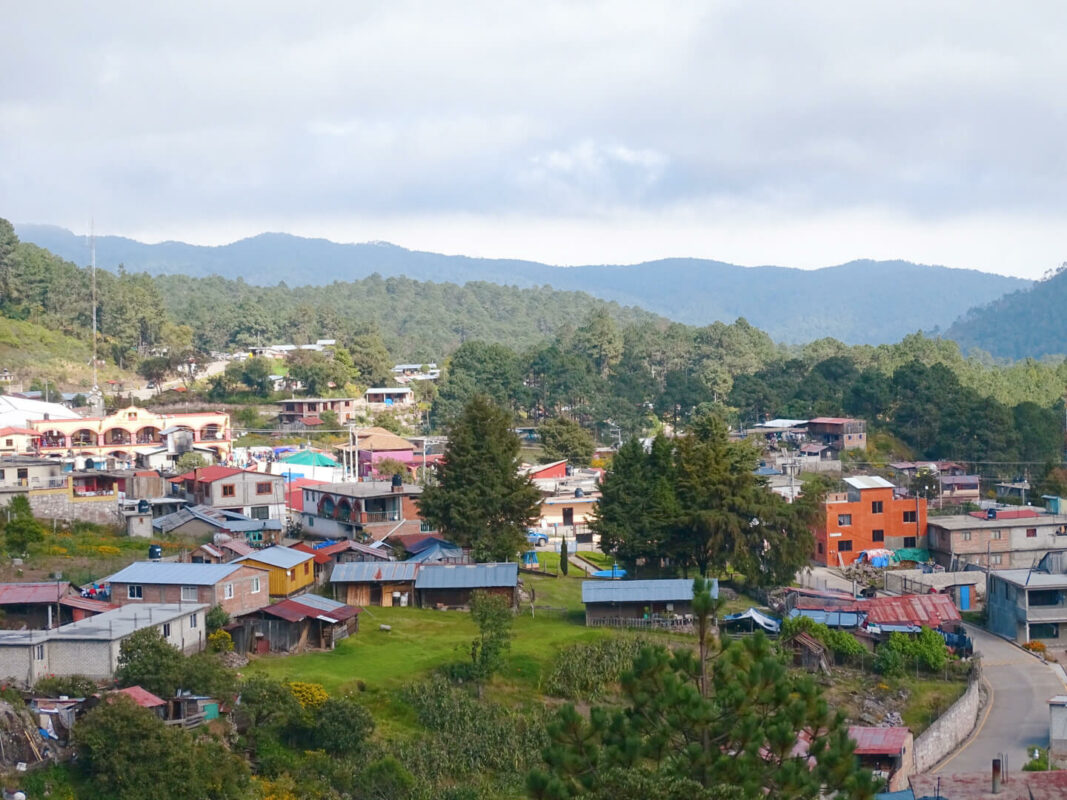
Meaning United Villages, the unique Pueblos Mancomunados are a group of eight small villages separated from the rest of Mexico in several ways.
The 8 Pueblos Mancomunados are:
- San Miguel Amatlán
- Benito Juárez
- Cuajimoloyas (where most of the photos in this blog were taken)
- La Nevería
- Latuvi
- Llano Grande
- Santa María Yavesía
- Santa Catarina Lachatao.
Ecotourism
The first six villages have joined together to create an ecotourism project that invites visitors to enjoy the hiking trails between them.
By earning money from welcoming tourists, the villages have money to put back into the community in the form of homes, schools, roads, and the like, thus creating a sustainable initiative that preserves the villages going forward.
You can visit as a day trip from Oaxaca or a multi-night excursion depending how immersed you want to get, and how much time you have. Whatever type of hiking excursion you’re craving, I have the answers in this guide to hiking the Pueblos Mancomunados!
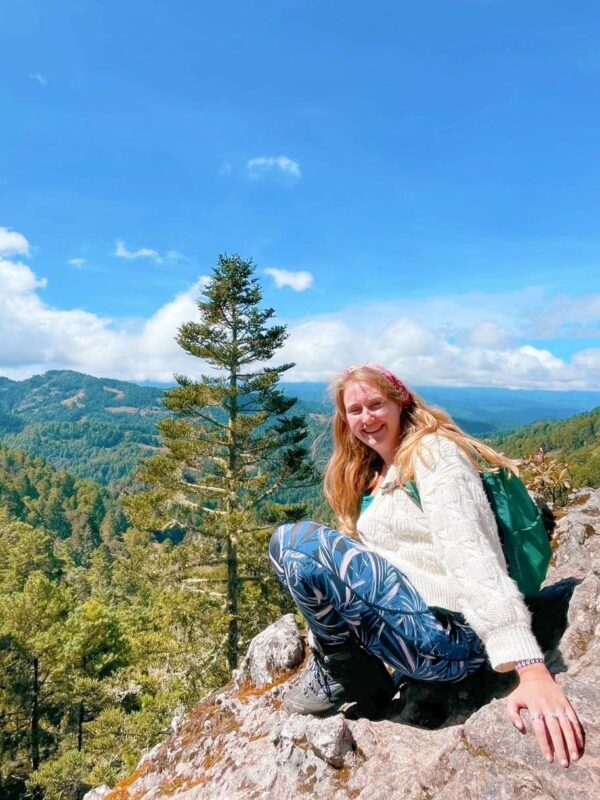
It’s thought that around 20,000 tourists a year visit these villages. I can see why! There aren’t many places in Mexico that offer such impressive hiking opportunities, especially within such easy reach from a major tourist city.
The Pueblos are easily accessible yet still hidden and underrated. We didn’t see any other tourists during our hike even though it was busy Day of the Dead season. After several days in huge crowds, this was quite the breath of fresh air!
Why to visit the Pueblos Mancomunados
These Oaxacan villages offer some fantastic hiking opportunities with striking vistas. There are also some hanging bridges with striking views. Up in the Sierra Norte mountains (Sierra Norte de Oaxaca), you’re at an elevation of around 3,000m (almost 10,000ft) and, as you can imagine, you can see for miles!
The air feels so fresh – if thin at the high altitude – away from the pollution of the cities. As someone who lives in the smog ball that is Mexico City, it was much needed!
Also, it’s a fantastic opportunity to learn about Zapotec culture and how these villages operate in a unique way. A day trip here is easily one of the best things to do in Oaxaca!
How the villages work
These villages are autonomous, meaning they’re not ruled by the Mexican government. Instead, they rule themselves and have their own president. The population is approximately 3,000-5,000 people.
They have a strong community focus and no government funding. If something needs to be built or fixed, the whole community comes together to do so. It’s required that residents spend one year of every three years doing community service.
Note – I also learnt about Mexican indigenous villages when visiting San Cristobal, Chiapas. Head to my guide to read more about them.
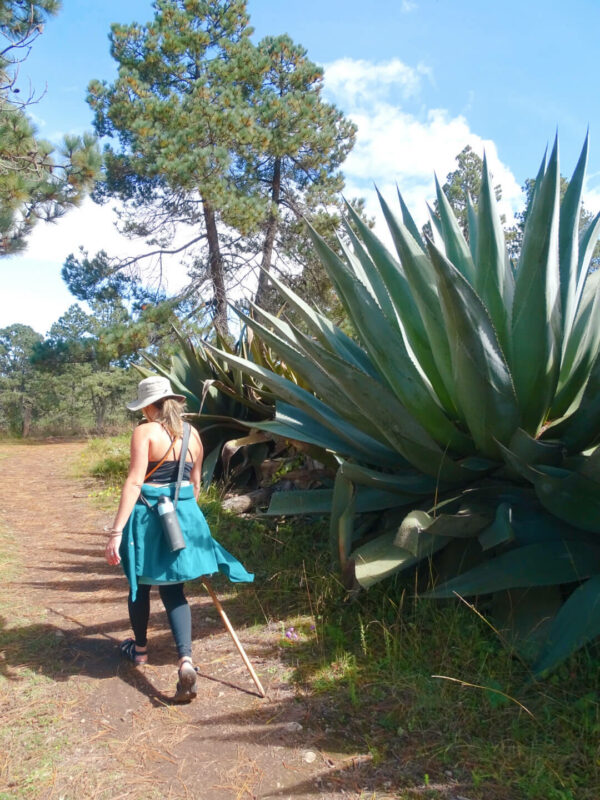
What’s the best way to visit the Pueblos Mancomunados – do you need a tour?
No, you don’t strictly need a tour to hike in the Pueblos Mancomunados but I would recommend it to learn about these unique villages. Finding the trails isn’t always easy and you want to be mindful of the fact you’re crossing private land. Especially if you don’t speak Spanish, it’s certainly the easiest option.
If you just have a day allocated and you’re staying in Oaxaca City, I especially recommend booking a tour with transport because it’s a long journey (with a change required) to arrive by public transport. I’ll explain how to arrive independently later.
Also, going solo won’t benefit the locals so it’s certainly best to support the ecotourism project.
If you’re keen to hike self-guided, the way to do it would be getting a bus or colectivo to Tlacolula de Matamoros (the location of the Tlacolula Sunday Market which I highly recommend visiting) and then getting another bus to Benito Juarez village.
The location you need for catching a ride to Tlacpolula is here near the Jalatlaco neighborhood.
Guided hike in Cuajimoloyas with Coyote Aventuras
Cuajimoloyas is one of the villages in the region located at an elevation of 3,227m (10,500 ft). It’s a fantastic place to hike in the Sierra Nortes.
I signed up for a 10km hike with Coyote Aventuras, a fantastic Oaxaca-based agency who I’ve done several trips with over the years (including Day of the Dead tours and an early morning Hierve el Agua trip).
Coyote Aventuras are a sustainable agency that hire local guides who know the area inside out, creating employment in the local area and an authentic travel experience for guests.
Here’s how our Pueblo Mancomunados hike went and what you can expect if you sign up…
Breakfast in Cuajimoloyas
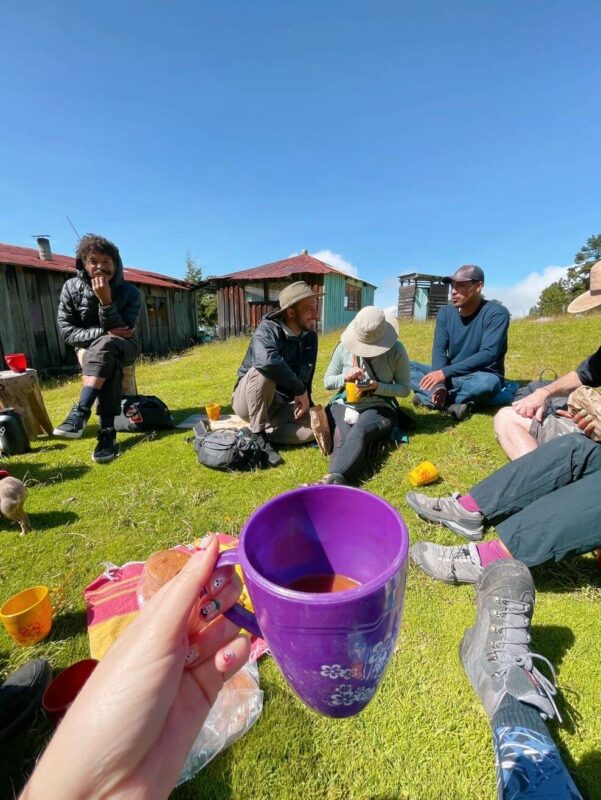
After meeting at the Coyote Aventuras office at 7am, we began the 1.5-hour drive into the mountains (during which I got chatting to my seatmates on the minibus). Soon, the city slipped by us and we were seeing striking vistas as we ascended into the Sierra Norte mountain range.
We arrived in Cuajimoloyas, filled up our water bottles, and headed to a peaceful spot in nature for our breakfast. After a tasty baguette from Boulenc – one of Oaxaca’s top restaurants – along with famous Oaxacan hot chocolate and bread to dip, we were all set for our walk.
Learning about indigenous flora and fauna
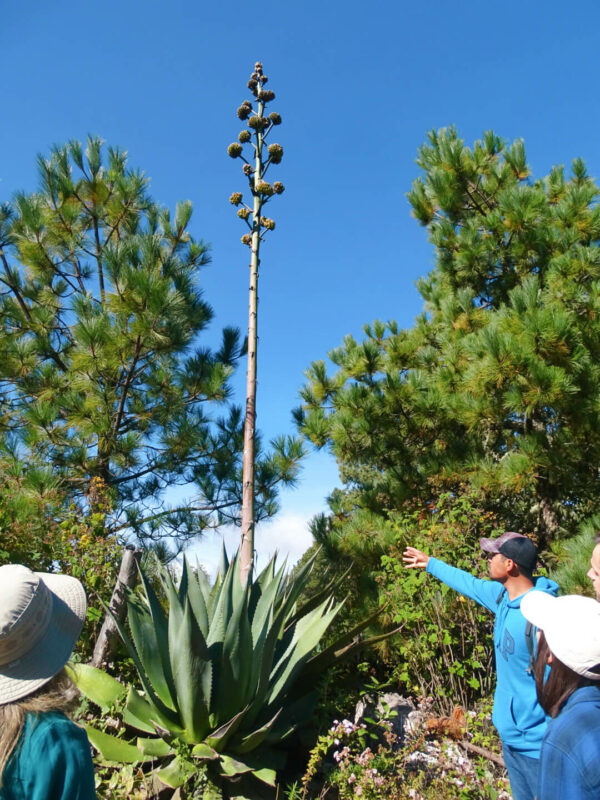
Soon after setting off on the hike, we were seeing beautiful examples of the local flora and fauna. These were as big as towering agave plants (and their flowers, pictured above) and as small as brightly colored mushrooms nestling in the undergrowth.
Our fantastic local guide who’d been born in the village gave us in-depth explanations. I learned so much, for example that agave trees and bats are both 12 million years old and helped each other evolve.
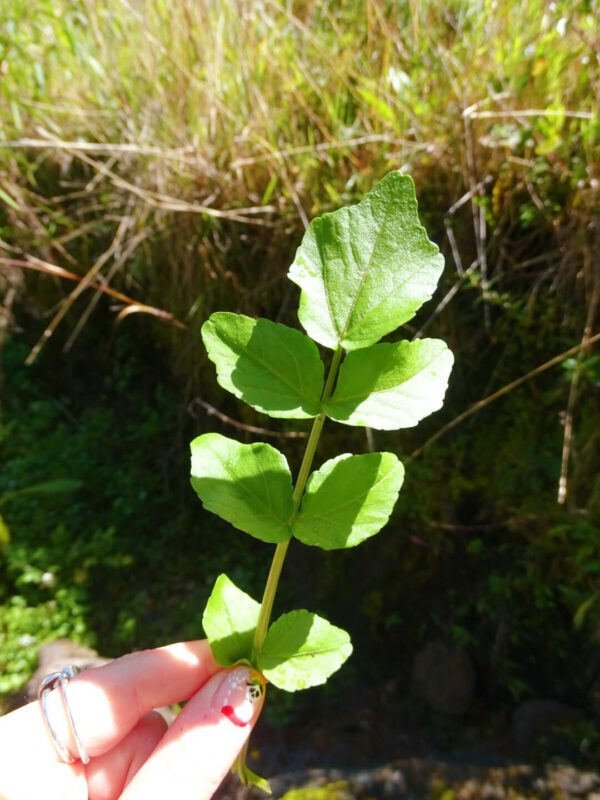
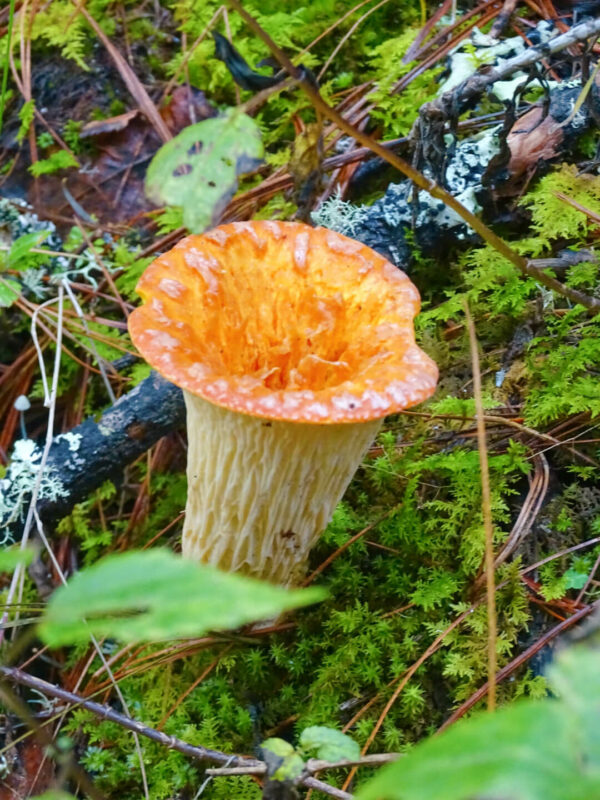
The local people in the villages are incredibly knowledgeable, using the power of plants and trees to cure ailments. I asked our guide if they use modern-day hospitals and healthcare, and she told us they do, but only as a second resort. The power of nature always comes first!
We got to try several leaves, many with rich flavors, that are thought to be good for various things such as boosting your immune system and supporting certain organs. They’re commonly prepared in food or tea.
We learned that the locals use sticky sap and wood from trees to make bandages and casts. Their ingenuity is impressive. Our guide told us a story about a local woman who lived to 112… Given the healthy, unprocessed diet, fresh air, and community spirit, I’m not surprised. It sounds like all the makings of a blue zone!
Finishing the hike back in Cuajimoloyas village
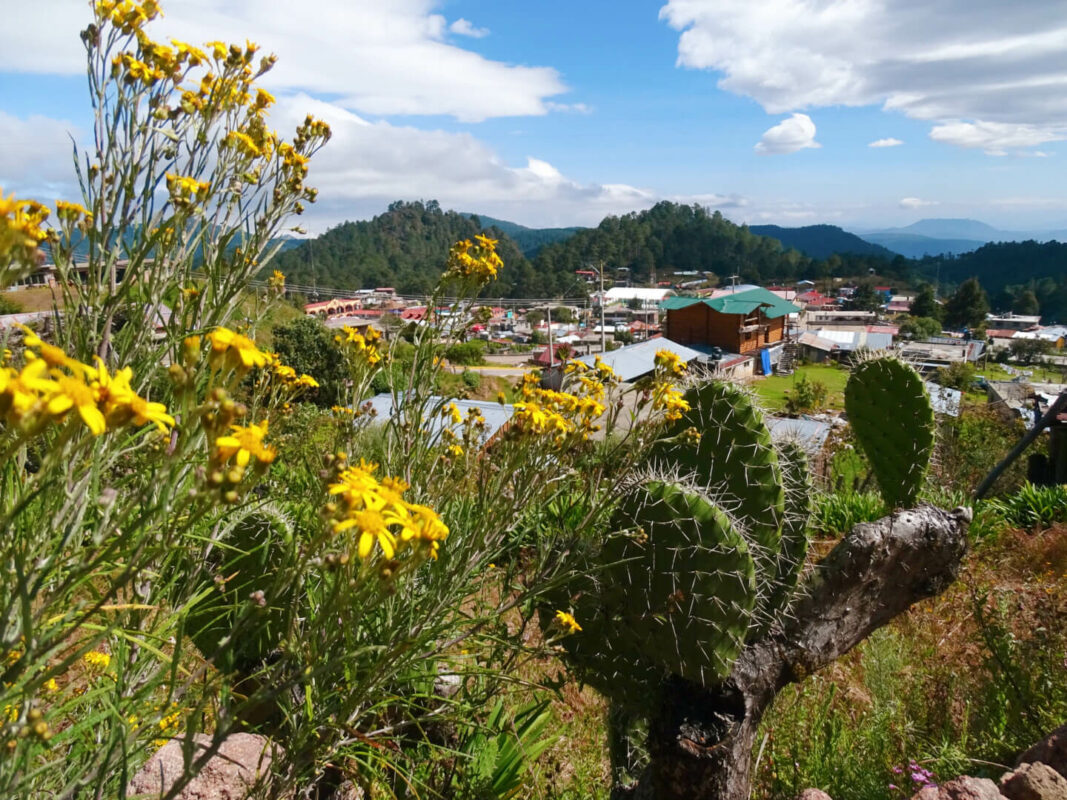
We spent approximately 4 hours hiking, before arriving back in Cuajimoloyas village. Although the hike wasn’t technically a challenging one, the high altitude resulted in me panting during the uphill sections. Luckily, our guides (who I presume find the hike easy since they’re used to the altitude) gave us plenty of rest stops.
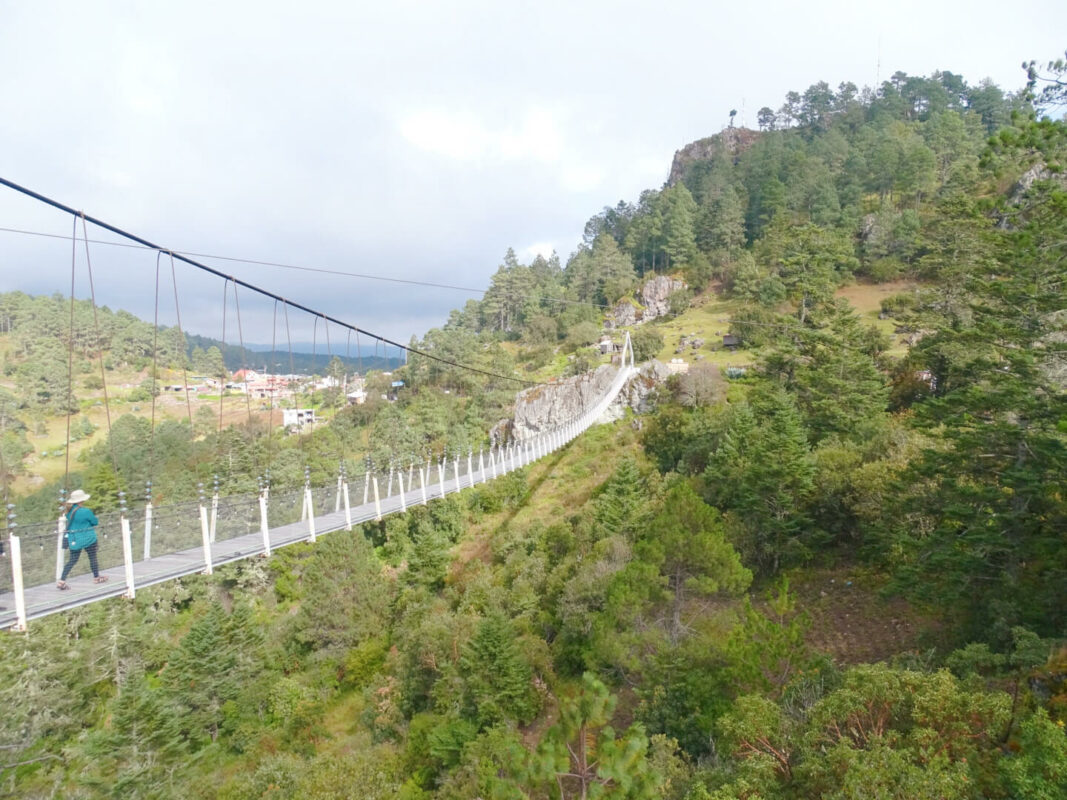
The final section of our hike included a fun walk across a hanging bridge, of which I believe there are a few in the Pueblos Mancomunados. The views from it were incredible and the finishing point led to more striking vistas, as well as a little store where I had the best dried mango of my life!
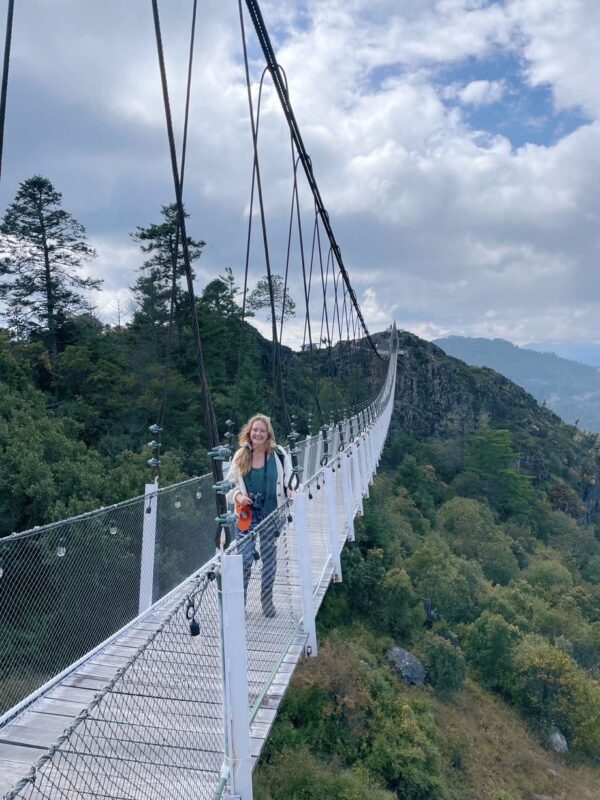
Lunch in the village
Finally, we were due a well-deserved lunch in the local village. It was an absolute feast! We tucked into stuffed chilis, rice, beans, mole sauce, chicken, Oaxacan cheese, chicaron, guac, salsa, eggs, bread, and our choice of coffee, tea, or hot chocolate.
The modest restaurant run by locals was an atmospheric place to relax and chat following our adventures hiking in the Pueblos Mancomunados.
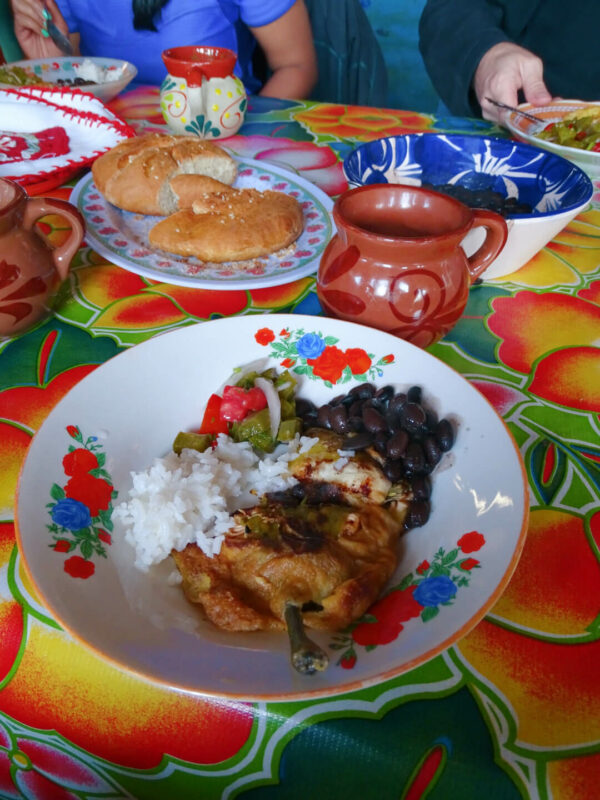
Hiking stats
Distance: 10km
Difficulty: medium
Ascent: 332m
Max elevation: 3,227m.
Final note bout the Coyote Aventuras tour in the Pueblos Mancomunados
I had a great time with Coyote Aventuras. It was clear that they take sustainability seriously, from hiring local guides to serving food from local businesses. They don’t use plastic water bottles, instead encouraging guests to bring reusable bottles and offering unlimited fill-ups.
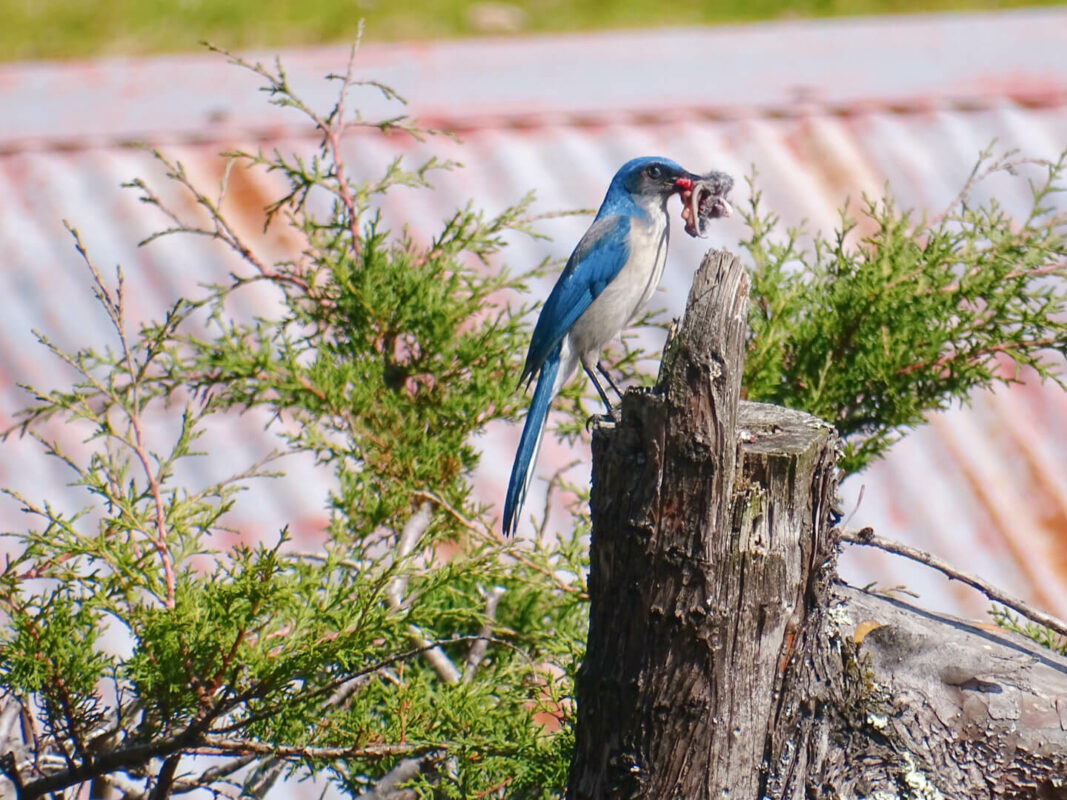
I don’t think I’d have learned a fraction of the amount I did without Coyote Aventuras, so for that reason alone I’m so glad I took their Pueblos Mancomunados hiking tour.
If you’re keen to do the same, book over on their website.
Other 1 day hike options in the Pueblos Mancomunados
Interested in other options? Coyote Aventuras also offer a one day hike from Benito Juarez to Cuajimoloyas and a Latuvi to Lachatao hike.
I wouldn’t recommend doing a day hike self-guided by public transport because, coming from Oaxaca, you need to change in Tlacolula on the way there and back so it’s a long day. One option is to arrange a deal with a local taxi driver in Oaxaca, getting them to drop you in Benito Juarez and collect you from La Neveria.
Multi-day hikes in the Pueblos Mancomunados
It’s possible to stay overnight in modest cabanas in the villages and continue your hiking adventures over the following days.
The general starting point for the multi-day hike is the village of Llano Grande (meaning large meadow), an hour’s walk from Benito Juarez.
- Day 1, Benito Juarez to La Neveria – this 8km hike is mainly uphill and can be challenging especially if you’re not used to the altitude yet, but the rich pine forests and sweeping vistas reward hikers.
- Day 2, La Neveria to Latuvi – this hike takes around 3 hours and is steep and hilly. You’ll cross a log bridge on the Guacamayas River.
- Day 3, Latuvi to Amatlan – the hardest leg of the journey is 15km offering spectacular views of the cloudy forest, rivers, and a striking canyon. Shortly before arriving, you’ll pass Lachatao village with a scenic church and viewpoint.
For multi-day hikes, it’s best to organize this with the ecotourism initiative, Expediciones Sierra Norte. They have options of up to 7 days in the Pueblos which include your accommodation, food, and guide services.
Alternatively, Coyote Aventuras organize a 2 day hike from Cuajimoloyas to Lachatao.
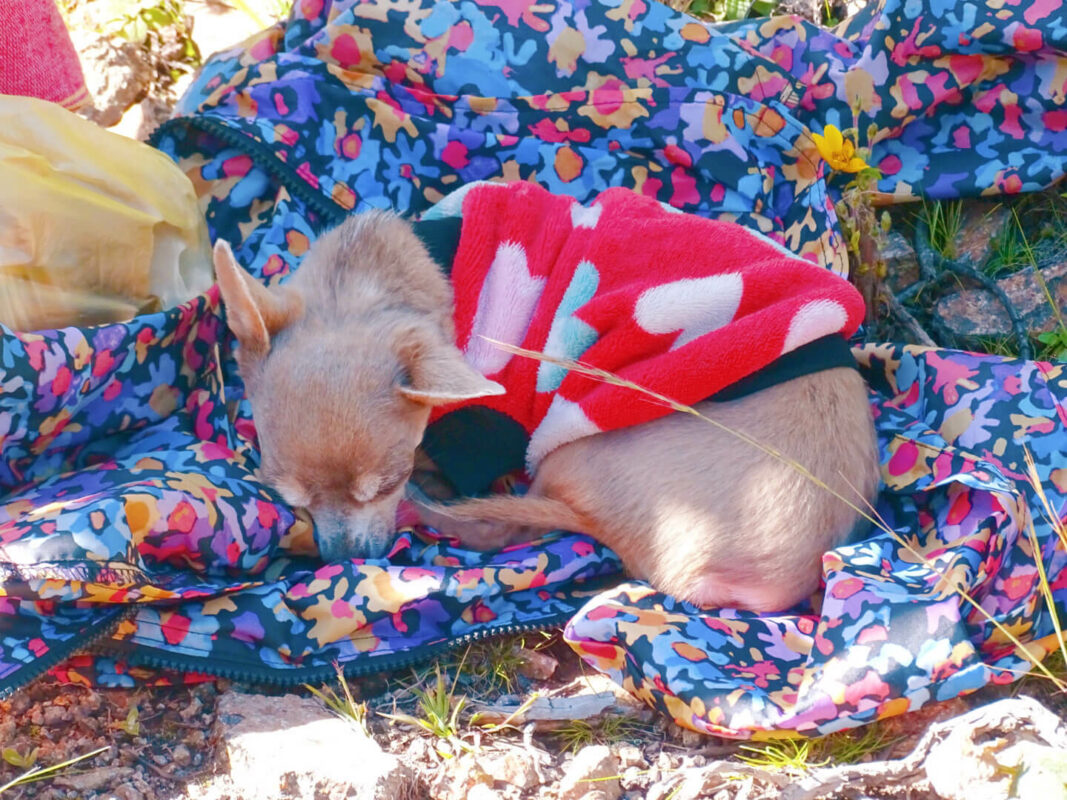
What to know for hiking
- Prepare for the altitude – it may leave you feeling short of breath. It affects everyone differently so the only way to know is to go! Make sure to go slow and drink plenty of water. Tell your guide if you’re feeling unwell.
- No ATMs in the villages – bring enough cash for the duration of your stay, even if that’s multiple nights. You won’t be able to get any while there, and you can’t pay by card anywhere.
- Expect simple restaurants serving local food – don’t expect any fancy/Western-style restaurants! Vegans and vegetarians can easily be catered to but let it be known in advance so your guides have time to prepare. Beans, tortillas, and vegetables are abundant, and vegetarians can enjoy delicious Oaxacan cheese.
- Local guides are unlikely to speak English so brush up on your Spanish (or take the Coyote Aventuras tour with an English-speaking guide as well as a Spanish-speaking one from the village).
What to pack for hiking
- Decent footwear – hiking boots are recommended
- An extra layer for the beginning and end of the day when it gets cold
- Rain jacket just in case
- Sunscreen, sun hat, and sunglasses
- Reusable water bottle
- Hiking poles – these weren’t necessary during our hike (but Coyote Aventuras have them available should you want them) but during harder hikes, they’ll come in handy
- Hiking snacks – unless you’re going on the Coyote Aventuras tour then no need as they give you tasty trail mix!
Is hiking in the Pueblos Mancomunados safe?
Yes, hiking in the Pueblos Mancomunados near Oaxaca is very safe. No crimes toward tourists have been recorded in these community-focussed villages.
That said, take the same precautions you would anywhere, not walking alone at night etc. If you’re ever hiking alone, tell someone where you’re going in case anything goes wrong. But since hiking in the Pueblos Mancomunados is usually done with a guide, you don’t need to worry about getting lost or stuck alone with an injury.
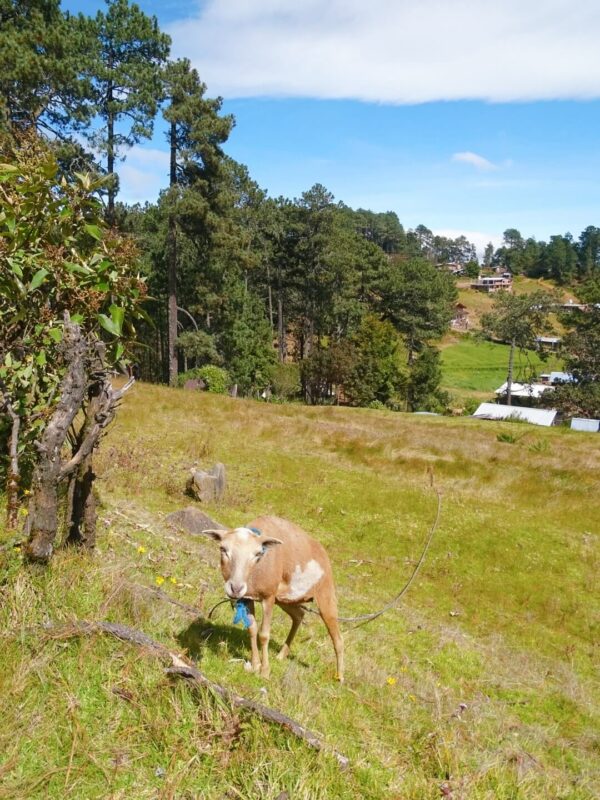
Best season for hiking Pueblos Mancomunados
Dry season – November to May – is the best time to hike in the Sierra Norte mountains near Oaxaca because it’s less likely to rain. During the rest of the year, rainfall usually occurs during the afternoons so you can still hike provided you set off early, and pack a decent raincoat of course.
Thanks for reading!
Read more Oaxaca blogs:
- 45 amazing things to do in Oaxaca City
- Visiting Tlacolula Market, Oaxaca
- Neighborhood guide to Jalatlaco, Oaxaca
